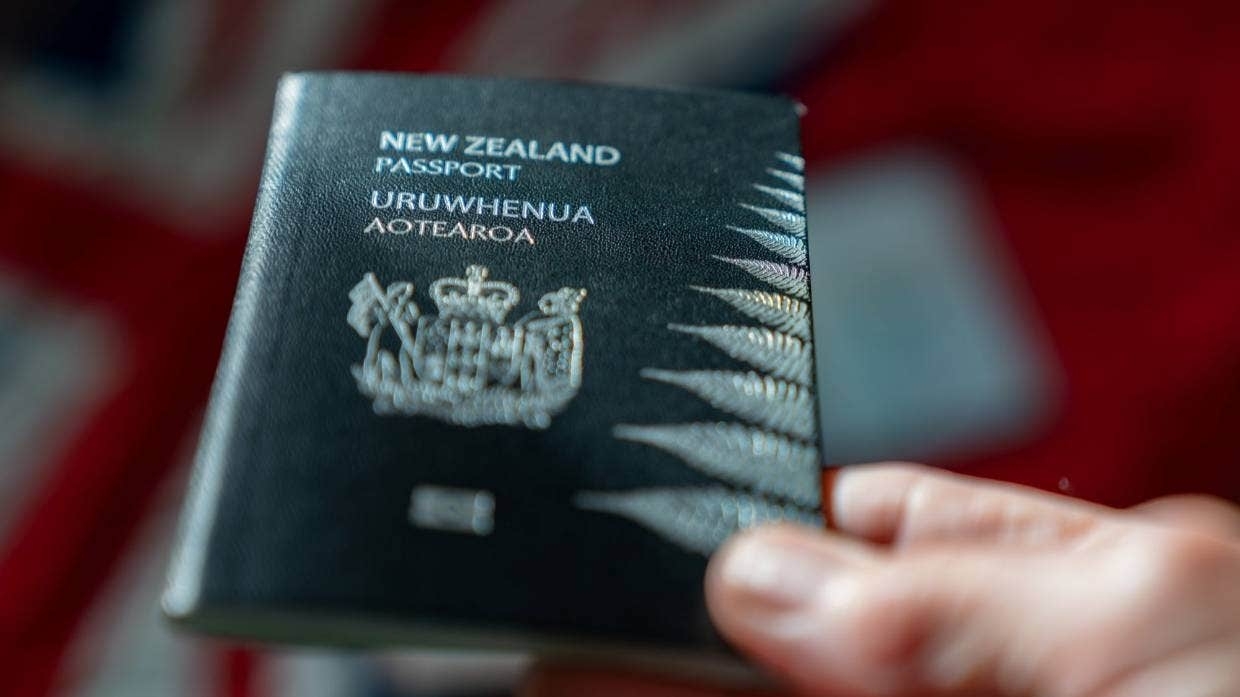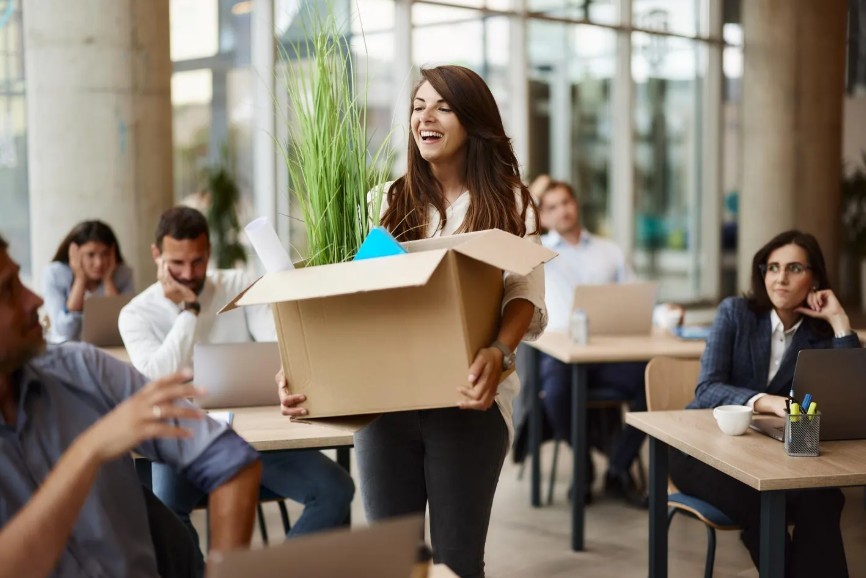Top 5 Most Powerful Empires In the World History
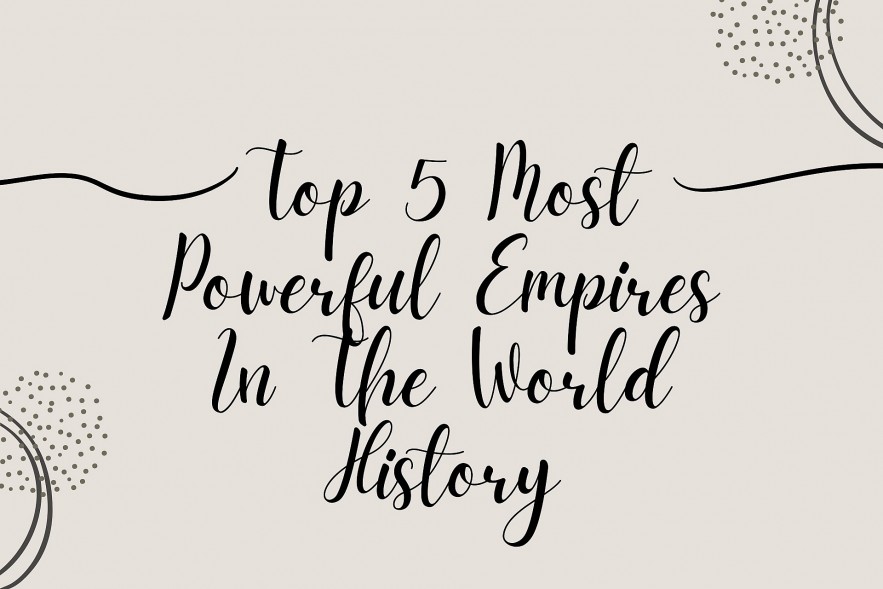 |
| Top 5 Most Powerful Empires In The World History. Photo: KnowInsiders.com |
| Contents |
Throughout human history, there have been hundreds of distinct empires. Among others, the top five empires are particularly notable.
Which five empires are the most powerful out of all those that have arisen and flourished? Out of the hundreds of empires that have ruled over the last 5,000 years, how do you pick just five?
When it comes to empires, certain ones stand out due to their strength, size, and historical influence, making them deserving of the title of greatest empires.
When did the world’s first empire appear?
As far as history tells us, Sargon the Great established the world's first empire in Mesopotamia around 2350 BCE. The Akkadian Empire, which was ruled by Sargon, flourished during the Bronze Age of human history.
One helpful definition of empire is provided by anthropologist Carla Sinopoli, who places the Akkadian Empire among those that lasted for two centuries. Sinopoli defines empire and imperialism as follows:
Imperialism is the process of establishing and sustaining empires. It refers to a territorially expansive and incorporative kind of state that involves relationships in which one state exercises control over other sociopolitical entities."
Top 5 Most Powerful Empires In The World History
1. The British Empire
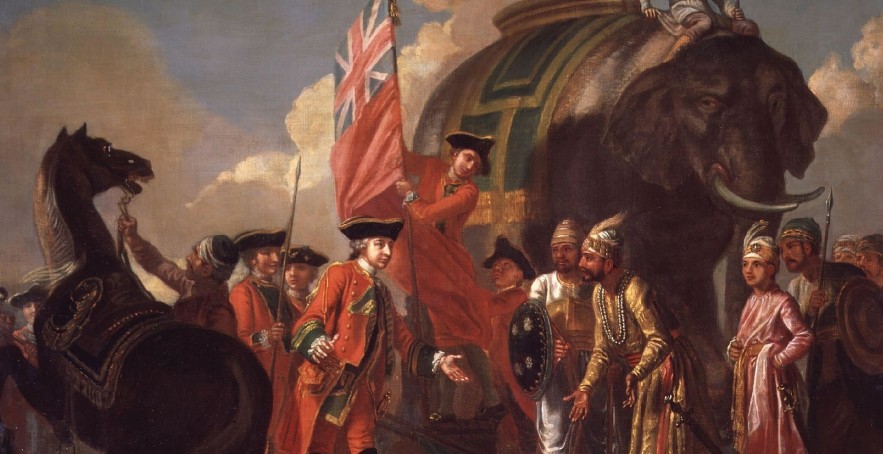 |
| Photo Historic UK |
Approximately one-fourth of the Earth's total land area, or more than 13,000,000 square miles, were covered by the British Empire at its height, making it the largest empire in history.
Once more, that equates to over 500 million people, or 25% of the global populace. "The sun never set on the British Empire," as the saying goes.
Because of this, it left a huge legacy of political reform, cultural exchanges, and way of life on these conquered lands.
Many linguists concur that English is the de facto standard language of the world, and it has spread to become the second most widely spoken language in the world today. Undoubtedly, one of the most significant empires in human history is the British Empire.
Little-known Facts about British Empire
The Empire actually started with the French
In 1066, William of Normandy conquered England. England was part of the Angevin Empire during the reign of Henry II, which included Ireland and most of western France.
The Empire is likely bigger than many people ever imagined
The British Empire covered the entire world. Because it was always daytime somewhere in the British Empire, there was a proverb that read, "The Sun never set on the British Empire." The fourteen British colonies never see the same sunset.
When the first Australian territories were taken in the late 1700s or early 1800s, that is most likely when the Sun truly stopped setting on the Empire.
The world had never seen an empire as big as the British Empire. Over 22% of the planet's surface, or 13.01 million square miles, was occupied by the British Empire.In 1938, the empire was home to 458 million people, or more than 20% of the global population.
Queen Elizabeth II was reigning as monarch while the Empire was still alive and well
When Elizabeth was crowned in 1952, Britain still had a real empire, with more than 70 overseas dominions.
| Does the British Empire still exist? While the Empire doesn’t technically exist any more, there are still territories in the Commonwealth overseen by the Queen. |
| Why did the British Empire fall? It’s all to do with money - what’s more, World Wars I and II effectively eroded much interest in keeping the Empire going! |
2. Mongol Empire
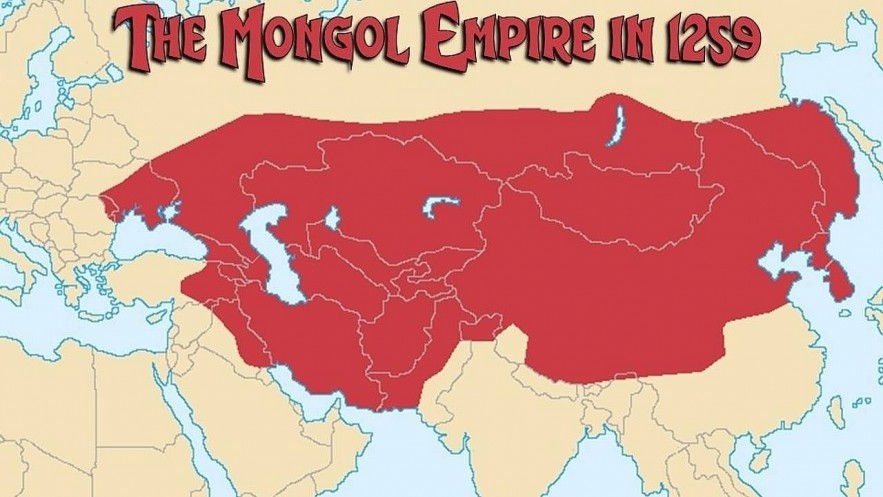 |
| Photo Students of History |
Who founded Mongol Empire?
Temujin, the future Genghis Khan, was born circa 1162 AD. His family was struggling to make ends meet. He was taken prisoner by a rival tribe, but he was able to get away and hide in a river cleft. He brought together numerous nomadic tribes from the Mongolian plateau in northeast Asia between 1178 and 1206, when he finally established the empire.
The Mongol Empire stretched from Vietnam to Hungary and was the largest continuous empire in human history. Unfortunately for them, there was no unity among the various cultures, and their empire was too vast to manage. Although they were fierce and fearless warriors, the Mongols lacked administrative experience. Throughout history, the Mongols have been associated with brutality and savagery.
The Mongol Empire was the world's largest empire, surpassed only by the British Empire. It was the world's largest continuous empire. It once encompassed a sizable region of 9.3 square miles, or 23 million square kilometers, or roughly 16.11% of the world's total land area.
| The Mongols did not profit from technological advancements that would have enabled them to rule their vast empire, in contrast to the British Empire. This ultimately caused the Mongol Empire to break up into smaller groups. The Mongols were known for their ruthlessness and ferocity. Still, the reopening of the Silk Route, which linked China with Europe, was one of the Mongols' more notable accomplishments. |
What led to the fall of the Mongol Empire?
It was a mighty empire. It was essentially led by a small, illiterate, and barbaric minority that treated all of its subjects as slaves. No sense of belonging or similar identity as "Chinese-ity" or "Roman-ity" could emerge. Such empires are doomed to fail sooner or later.
It was never able to sort out its throne inheritance. While the situation was not as bad as it is in most Polygamist societies, where the country descends into civil war as the dead king's sons begin to murder and eliminate each other in a deadly musical chairs game, with the last surviving becoming the king, the Mongols never got it quite right. When a Great Khan died, the kurultai appointed one of his sons as Great Khan, and the other sons were given their own sub-khanates to govern. It was in the kurultai's best interests to choose an agreeable yes-man as Great Khan, as he would pose no threat to the other sub-khans.
The state is too large and stretched. Keeping the empire running was simply impossible logistically.
Slavery is the foundation of the economy. Such empires are always doomed from the start; even if the Mongol Empire had lasted another 200 years, it would have collapsed due to economic failure, just as the Roman and Arab empires did.
There will be no more good generals. Gödei was fortunate in that he had three of the best field commanders of the day: Subudei, Batu, and Baidar. They, not the Mongol armies' inherent superiority, were the key to the Mongols' initial expansion and conquest. However, once they were gone, the subsequent generals were more interested in office politics and court intrigue than in military matters. Nogai couldn't compete with Batu, and Talabugha was no Subudei.
Their adversaries had learned how to fight them. The invasion of Hungary in 1285-1286 was a complete reversal of the campaign in 1241-1242, and Nogai and Talabugha were bloodied.
3. The Roman Empire
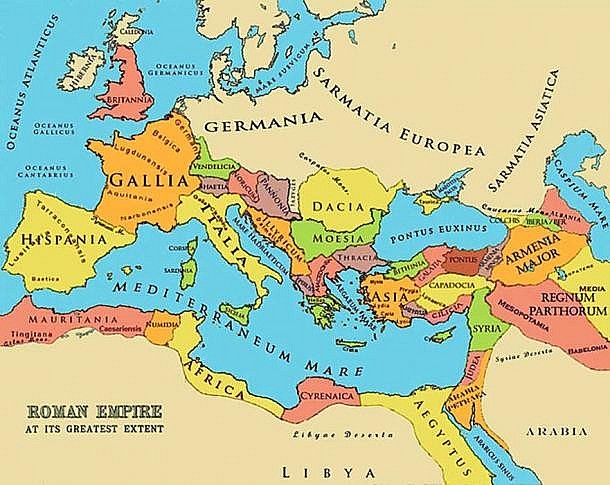 |
| A referenced map of the Roman Empire at its greatest extent. Photo ancient origins |
While the British and Mongol empires had the largest empires in history, neither was the longest-lasting. The Roman Empire holds this title (if the Byzantine Empire is counted as part of the Roman Empire).
This empire began in 27 BC with Augustus' accession to the throne and ended in AD 1453 with the fall of Constantinople to the Ottomans. It should be noted that the western half of the Roman Empire ended in the fifth century AD, and the Byzantine Empire was temporarily dissolved as a result of the Fourth Crusade in the thirteenth century AD.
Nonetheless, the Roman Empire lasted nearly a millennium and a half. Needless to say, the Romans had a significant influence on the landscapes of Europe, Asia, and Africa, as well as the minds of those who inherited their lands.
The Roman Empire is responsible for many important aspects of modern life. The Romans inherited and developed Hellenistic (Greek) culture, passing down Greek architecture, philosophy, and science to future generations. Later, the Roman acceptance of Christianity helped elevate it from a minor cult to one of the world's great religions.
Why did the Roman Empire fall?-Invasions by Barbarian tribes -Economic troubles and overreliance on slave labor -The rise of the Eastern Empire -Overexpansion and military overspending -Government corruption and political instability -The arrival of the Huns and the migration of the Barbarian tribes -Christianity and the loss of traditional values -Weakening of the Roman legions |
4.The Persian Empire
 |
| Photo kienthuc.net |
Known as the King of Kings (Shahanshah), Cyrus the Great established the Achaemenid Persian Empire circa 550 BCE. Even though Alexander the Great brought the Persian Empire to an untimely end in 330 BCE, it left a lasting impact on the advancement of world civilizations and other empires. Since it was the first real empire and established the norm for what an empire should be, the Persian Empire was in fact a pivotal one.
What Are Persian Empire’s Symbols?
Persian Rugs
 |
| Photo Amazon |
The Persians frequently experienced severe weather, particularly during the winter. The Persian tribesmen, who were mostly nomadic, woven carpets and rugs as a necessity to fend off the cold. These rugs developed into an art form as trade expanded and the empire solidified. The rugs became well-liked due to their adaptable patterns and designs, and they quickly became a significant export.
The art of making carpets is thought to have begun some 2,500 years ago, and the designs of carpets and rugs evolved with each invasion and conquest. Cyrus the Great had his tomb covered in carpets and rugs in Pasargadae, close to Persepolis, because he was so taken by the exquisite designs and patterns on the carpets.
The Altai Mountains in Siberia are home to the oldest known carpet found. Siberia's frigid regions contributed to the carpet's preservation and provide us with an understanding of the ancient people's abilities. The carpet's patterns demonstrate how carpet weaving has advanced beyond straightforward patterns. The rug is currently on display at St. Petersburg's Hermitage Museum.
Persian Roses
Roses are a gift from Persia to the world, and they are widely recognized as a symbol of friendship and love. For a very long time, they were indigenous to Persia and its surrounding regions. The first rose variety to be traded was the yellow Persian rose, which arrived in Vienna sometime in the sixteenth century. From then on, its color and fragrance gradually brought it fame throughout Europe and beyond.
Perisna Pets
 |
| Photo petshelpful |
Hedgehogs and dogs were two of the Persians' favorite animals. Homes used to keep hedgehogs as a pest and ant deterrent. Following the Islamic conquests, people were willing to pay exorbitant taxes in order to retain their domesticated hedgehogs, despite the fact that they were illegal. The Persians also had a strong affinity for dogs, and they kept exotic dog breeds as lucky charms. The Persians loved and cared for dogs, viewing them as sacred animals.
| The Fall of The Persian Empire: Heavy Taxation and The Economic Downfall The kingdom was on a slippery slope that ultimately resulted in the fall of the Persian Empire because of the high taxes levied on the populace, which eventually caused an economic downturn. In addition, the obligatory tributes that were required of the participating countries were excessive. Weak Leadership and Lack of Identity The emperors of the Persian Empire failed to forge a national identity during their reign, and they were never able to unite the numerous subject nations. The severe financial circumstances and the significant cultural divide thwarted any such aspirations. Eventually, the military's effectiveness suffered from this lack of cohesiveness. Following the death of Xerxes I (486-465 BC), the empire was also without a strong leader. This caused a great deal of internal unrest, along with the absence of a national identity. Numerous battles for supremacy and infamous satrap uprisings contributed to the decline of the Persian state and ultimately led to the fall of the Persian Empire. Revolts and Turmoil Even though Artaxerxes II's reign was peaceful overall, there were a few uprisings. Artaxerxes II initially prevailed in his conflicts with Greece. But after that, he began to experience increasing difficulties with the Egyptians, who had revolted during the first part of his rule. In 373 BC, the Persians eventually made an attempt to retake Egypt, but they were unsuccessful. The only thing Artaxerxes II accomplished was to thwart a combined Spartan and Egyptian attempt to take over Phoenicia. |
5. The Ummayad Caliphate
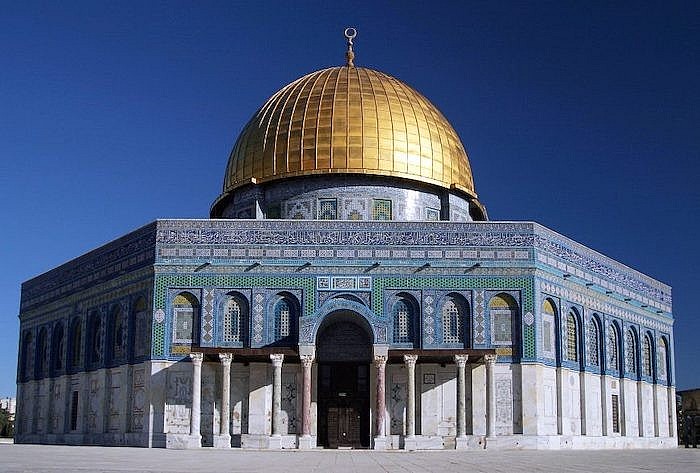 |
| Photo Khan Academy |
The second of the four caliphates founded following the Prophet Muhammad's death, the Ummayad Caliphate, is another empire that belongs on a list of the "greatest empires." Nearly a third of the world's population was ruled by the Ummayad empire, which peaked in the seventh century AD and spanned an area of 11.1 million square kilometers. The fact that this empire promoted the spread of Islam and helped it become a major global religion is arguably one of its greatest historical contributions. Furthermore, because so many advances in the arts and sciences were made by the intellectuals of the Ummayad Caliphate, it has also been referred to as the Golden Age of Islam.
The Umayyad Caliphate used its reach to spread IslamThe Umayyad Caliphate occupied 5.02 million square miles of land, accounting for more than 8% of the world's landmass. The empire had 62 million people aged 720 to 750, accounting for nearly 30% of the world's population. The second Islamic caliphate was established in Arabia following the death of the Prophet Muhammad, and while the Umayyad family originated in Mecca, Damascus was chosen as its capital. The Umayyad Caliphate, named after the first Umayyad caliph's great-grandfather, ruled between 661 and 750 A.D. |
How did this huge empire fall?Before the empire ended in 750, the caliphs had been plagued by military defeats and financial problems. Following the crushing defeat of the Umayyad forces by the Byzantine army in 740, civil war erupted in the Islamic world between the Qays and Kalb factions. The war was won in 749 C.E. by Abu al-Abbas al-Saffah, who established the third Islamic empire (the Abbasid Caliphate) and executed members of the Umayyad ruling family. |
All of those 5 powerful empires fell. Will America fall, too?
In what way, then, does the United States of America compare to all these titans? In terms of military might, the United States is unquestionably the most powerful country in history. It combines resources the size of a continent with a deeper-seated liberalism and British commercial ingenuity. Its culture is appealing, just like that of the Romans. It is capable of utter destruction, just like the Mongols. It has disseminated a global ideology, much like the Arabs. America connects disparate regions and blends various cultures, much like the Persian Empires did.
America will remain a major power for a very long time because of all these factors. However, in order to avoid replicating the mistakes of past empires, America must also bear in mind their shortcomings. Rome crumbled even with an overwhelming military might. Even the mightiest empires can fall due to internal strife and division. It was not their weakness but rather the incapacity of their leadership that led to the Persians' conquest. The Mongols were able to win battles, but they were unable to bring about peace or establish a lasting presence anywhere. The Arabs gave rise to a prosperous civilization, but the good parts of it were appropriated by outsiders, who reduced the Arabs to servitude. Ultimately, the British were burnt out from trying to maintain their interests, the European system, and world order while attempting to do too much at once.
 Who Was The First King And Top 10 Greatest Kings In The World of All Time Who Was The First King And Top 10 Greatest Kings In The World of All Time Who was the King of the first empire in the world’s history? Read on this article to know the answer. |
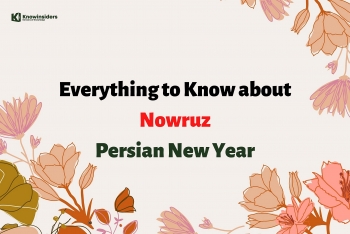 How to Celebrate Persian New Year 'Nowruz': Traditions and Customs How to Celebrate Persian New Year 'Nowruz': Traditions and Customs Nowruz is the Persian New Year celebrated by many countries in the Middle East, Central Asia and those in the Bahá’í faith. Check out this ... |
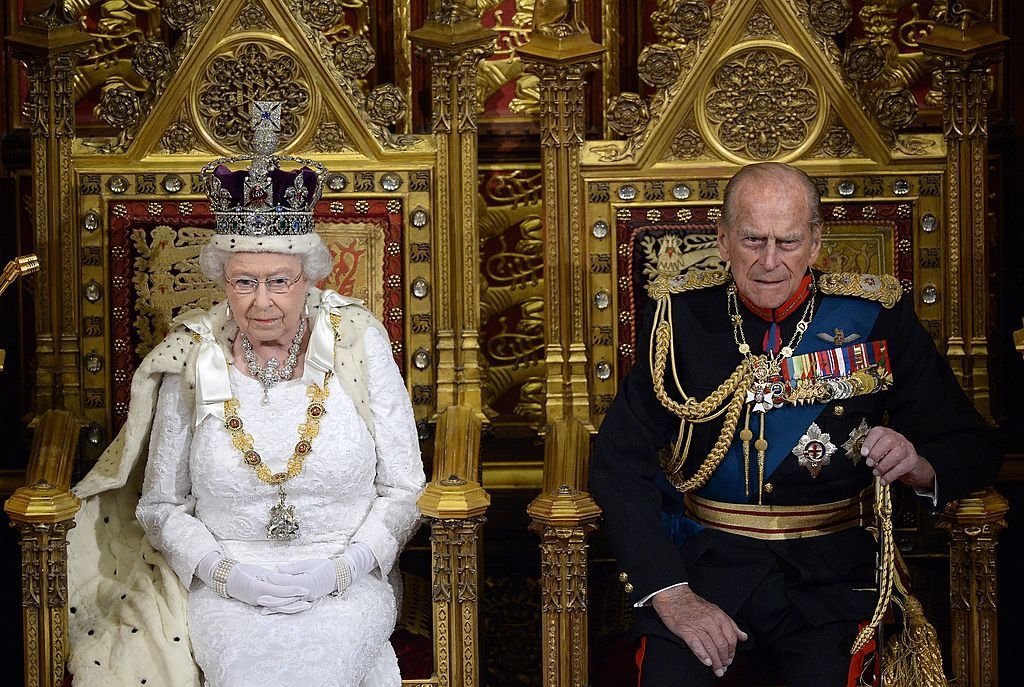 Why Isn't There A King Of England? Why Isn't There A King Of England? Learning about British Royal Family’s history, you will find a lot of interesting stories. One of them is there is no King of England. The ... |



